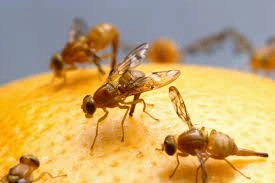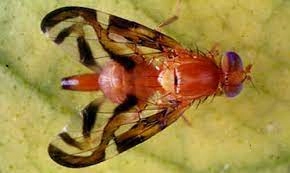profile/9095a1c4934a45b913855bd7f587ff15698d.jpg.webp
Austin

Mating Experience And Juvenile Hormone Enhancement With Caribbean Fruit Flies
~1.2 mins read
Effective sexual signaling systems are essential for insect reproduction. To avoid wasting reproductive effort and energy, these systems are typically connected with adult reproductive maturity. As a result, variables that affect sexual maturity must be closely coordinated with endogenous mechanisms that regulate signaling systems. For instance, juvenile hormone (JH) synchronizes pheromone generation with gonadotropic activity cycles in the German cockroach, Blatella germanica. Additionally, sexual signaling and reproductive maturity, as indicated by the development of mature eggs, are closely coordinated in insects that do not have cycles of reproductive activity but enter reproductive diapause at specific times, such as the moths Pseudaletia unipuncta and Agrotis ipsilon. Females in each of these moth species need JH to start calling behavior, produce sex pheromones, and create eggs. It is well known that sexual signaling by males and female responses are closely synchronized with reproductive maturity in the Caribbean fruit fly, Anastrepha suspensa (Loew), despite the fact that no studies have specifically examined the hormonal coordination of reproductive maturity with sexual signaling in this species. Additionally, ovarian maturity and female reproductive behavior, particularly pheromone responsiveness, are directly connected. Similar to how female ovaries mature and begin to initiate sexual contact, developmental studies of male salivary and multiple glands—both probable sources of pheromone production—showed that these glands grow to their maximal size at the same time. As a result, neither males nor females participate in sexual behaviors until at least seven days after adult emergence, when they have reached reproductive maturity. These data imply that adult flies go through a hormonally controlled phase during which secondary sexual characteristics and gametes grow. Males mature sexually earlier than the bulk of the population, likely because they are larger and have sufficient energy reserves.
profile/9095a1c4934a45b913855bd7f587ff15698d.jpg.webp
Austin

Larva Of Caribbean Fruit Flies
~0.9 mins read
The larva of caribbean fruit flies is white and has the conventional fruit fly larval structure (cylindrical, elongated, anterior end often slightly recurved ventrally and with mouth hooks, flattened caudal end), but there are 10 visible fusiform patches; the last instar is around 8 to 10 mm in length. Eight anterior buccal carinae are typical. The cephalo-pharyngeal skeleton has an increased dorsal bridge, a longer pharyngeal plate than the dorsal wing plate, and a long pharyngeal support. The mouth hook is relatively broad (length 2 X breadth), and the hypostome is almost equally wide. There are 12 to 13 tubules in the anterior spiracles, which are slightly asymmetrical and have a median depression. Caudal end with pairs of dorsal (D1 & D2) and intermediate (I1 & I2) papillules, as well as a distinct I3; prominent L1; indistinct V1 (rarely somewhat prominent); D1 & D2 acutely angled (ca. 45°) and closer together than 11 & 12 (ca. 1/2 distance); I1 & I2 almost in a horizontal line (ca. 10-15°); I1, I3, and L Most interspiracular processes (hairs) are typically not branched distally, and posterior spiracles are extended (about 3-3.5 X breadth), with dorsal two oriented upward and ventral one angled downward on either side of the midline. Anal lobe is usually complete. It is challenging to identify A. suspensa and other Anastrepha species accurately as larvae.
Advertisement

Link socials
Matches
Loading...
